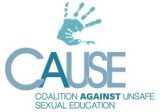Executive Summary.
This report presents a careful summary and an up-to-date explanation of research—from the biological, psychological, and social sciences— related to sexual orientation and gender identity. It is offered in the hope that such an exposition can contribute to our capacity as physicians, scientists, and citizens to address health issues faced by LGBT populations within our society.
Some key findings:
Part One: Sexual Orientation
- The understanding of sexual orientation as an innate, biologically fixed property of human beings—the idea that people are “born that way”—is not supported by scientific evidence
- While there is evidence that biological factors such as genes and hormones are associated with sexual behaviors and attractions, there are no compelling causal biological explanations for human sexual orientation. While minor differences in the brain structures and brain activity between homosexual and heterosexual individuals have been identified by researchers, such neurobiological findings do not demonstrate whether these differences are innate or are the result of environmental and psychological factors.
- Longitudinal studies of adolescents suggest that sexual orientation may be quite fluid over the life course for some people, with one study estimating that as many as 80% of male adolescents who report same-sex attractions no longer do so as adults (although the extent to which this figure reflects actual changes in same-sex attractions and not just artifacts of the survey process has been contested by some researchers).
- Compared to heterosexuals, non-heterosexuals are about two to three times as likely to have experienced childhood sexual abuse.
Fall 2016 ~ 7
